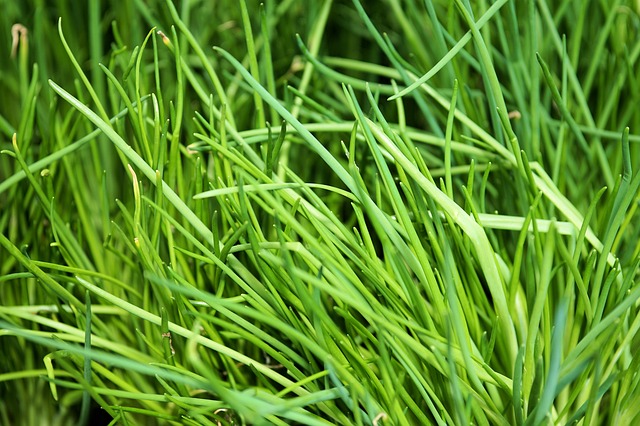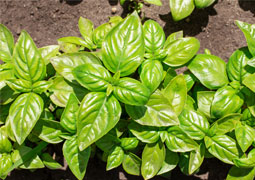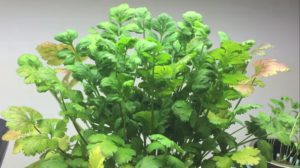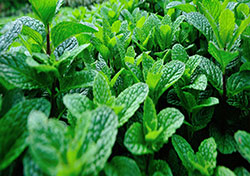You’ve probably encountered chives from soups, pizza, salads, omelets, baked potatoes, and many more. Stick around to learn more on how to grow your own chives to have a long lasting supply of chives.
This plant is a relative of onions, leeks, and garlic, which is very evident in the taste. It has a mild onion or pungent taste with a hint of garlic taste. The combination of these two strong flavors make up the unique taste of chives.
And yet surprisingly, a lot of people love the unique taste that it gives. I am personally guilty of that offense. I love chives in my baked potatoes and omelets. That’s why I grow them in my garden.
The origin of this plant could be traced back from over a millenia in Europe and Asia. But now, it has been used in a lot of cuisines.
It’s even popular in France for their cooking. It is even considered as fines herbs which is the set of core herbs used in french cuisine. Even in Sweden, Russia, and Poland use chives in different delicacies known to them.
With the wide usage of chives in different countries, planting them would be truly rewarding. So whether you want to grow chives for business or for personal use, this would really be an experience you should definitely try.
Grow Your Own Chives at Home
This plant is one of the easiest herbs to plant. So if you’re new to gardening, this plant would be the perfect starter plant for you.
For me, this is one of the most rewarding plants to grow. It has a lot of benefits for you and your garden, besides the yield that you would get after some time.
It could function as an adornment to your garden and will give you a formal English vibe. You’ll also enjoy visits from beautiful butterflies from time to time. These winged insects love the while, lavender, or pink flowers of chives.
As an herb, it could also help a lot of your plant in providing natural insect repellent to other plants in your garden. It is known to repel Japanese beetles and carrot rust flies.
Aside from this, they are also require less effort to maintain than other plants. Most importantly, this plant is hardy perennial, which means that they grow even during extreme cold weather conditions.
They don’t require large space to grow. In fact, they actually grow on containers and could be placed indoors. As long as you could place them on a shady windowsill, growth of chives won’t be a problem.
Soil and nutrient requirement is really easy. All you need is moist and well-draining soil for a thriving chive plant. Compose and all purpose fertilizer would also suffice the nutrient needs of this plant.
Although it is a natural insect repellent, it is still susceptible to a number of pests and diseases. Since the shoots are the primary product of this plant, you should maintain the quality of the leaves and shoots.
You see, this plant is one real easy job to do. You’ll never notice that you’re on your way to harvesting. In fact, this is one of my first plant to grow when I was starting my garden. So, let me share with you the wonderful experience of planting and growing chives.
Grow Chives Step-by-Step Guide
If you want to have a beautiful harvest, you should make sure that you start with ease. This is to ensure that the growing and maintenance of the plant is at ease right from the start.
To guide you with ensuring the start of your planting process is perfect, here are the things you need to know.
Planting chives
What type of chives should I plant?
There are two common types of chives that you’ve probably encountered.
Chinese chives is the most common chives used for cooking. They have a slightly onion taste that works well with salads, and garnish.
It’s subtle taste probably made it a popular choice. It’s look is really conventional with a long tubular and are bright dark green in color.
On the other hand, garlic chives are another type of chives used also for cooking. This type of chives has a more subtle garlic taste to add into a dish. The look is flat stems with bright to dark green in color.
Even the flowers of this plant could be used.
There are still a lot of varieties of chives that you should look into. You should just determine the objective of your planting practices.
As for me, my favorite is the classic Chinese chives. I usually use it in my cooking.
Where can I find chives seeds?
Look for healthy seeds that came from healthy mature plants. This means that your seed should be free from diseases or pest infestation.
So make sure that you’re buying the seeds from a trusted store.
You could also try and visit the nearest nursery to you. These seeds were probably raised and grown in your area, so the seeds won’t need to adapt to changes in climate or other environmental conditions.
For me, I usually purchase my seeds through this store. This store offers quality seeds that produce high yielding chives plants. Be sure to visit this to get to know other seeds that it offers.
When is the best time to plant chives?
Chives are hardy perennial plant. This means that they could withstand strong winter conditions. Therefore, they could be planted any time of the year.
But for best results, you should plant the seeds eight to ten weeks before the last spring frost if you are planting them indoors.
Meanwhile, directly sow the seeds as long as the plant is already workable. Soil should be 60 to 70 degrees Fahrenheit to directly plant the seeds.
I usually plant them indoors to give them a head start before planting them directly into the garden bed. While this plant could be directly seeded, the plant is not yet productive for the first year.
You could view the gardening calendar in your area through this link.
For this tutorial, we will be planting the seeds first and then transplanting the seedlings into the garden bed.
What is the best container to use when planting chives?
For the seed germination, you could use conventional seedling container. Just make sure that the pot have holes underneath to ensure proper draining.
Soil moisture must be maintained but not to the point of soaking. This might largely affect the plant as it could stunt the growth or it could induce growth of diseases into the plant.
For the transfer of seedlings for propagation, opt for a larger pot with six to eight inches in diameter. You may also look for bigger container; just place a six to eight inches of space between each seedling.
Similar to the seedling tray, find a pot with holes at the bottom for well draining capacity.
How do I plant seeds?
For this tutorial, seeds will be planted first into the garden soil and then transplanted into the soil.
This should be planted eight to ten weeks before the last spring frost since seedlings should be given enough time to grow for proper growth when transplanted.
Plant them under full sunlight or you could also use artificial lighting like fluorescent lamps.
After putting one seed into each section of the seedling tray, fill the container with soil. I usually use a well draining soil for chives.
Although it needs moisture for germination, soil should be drained to avoid clogging of nutrients or water.
Afterwards, water the soil, but avoid overwatering it.
Lastly, to help in germination, place a newspaper or cardboard above the soil. A 70 degrees Fahrenheit is recommended for optimal germination. After fourteen days, you could expect the seedlings to sprout.
How do I prepare the soil for transplanting chives?
While waiting for the seedlings to mature, we’ll be preparing the soil for the transplant. Since this plant is low in maintenance, we won’t need to prepare a lot of nutrients and equipment.
As a general rule for this plant, soil should always be moist, fertile and rich, but you should use a well-draining soil. You could grow them in light, loamy, and sandy soils and expect best results.
This is to ensure that the plant roots are not soaked in water to avoid possible complications in their growth and diseases.
To add nutrients into the soil, apply four to six inches of compost into the soil.
Then, place 2 to three tablespoons of all-purpose fertilizer (16-16-8) into each square foot of the planting area.
Mix well with the soil until the organic matter and fertilizer reaches six to eight inches deep into the soil.
In addition, this plant also needs a pH of 6 to 7 for optimum growth. Send a sample to the nearest soil laboratory for evaluation. You could also use a cabbage to test the pH of the soil. This easy DIY would be faster and cheaper.
If it’s too low, add agricultural lime into the soil by using a small shovel. If it’s too high, mix the soil with fertilizer with urea phosphate or ammonium nitrate.
How do I plant chives?
Plant your seeds outdoors one to two weeks before the last frost of winter. If you want to be exact, you may view your planting calendar. Frost dates differ from each region or area.
Before the transplant, water the soil thoroughly to ease the adaptation of the seedlings when transplanted. You could use a hose to easily dampen the soil. Ensure that the soil is damp but not too wet for the transplant.
This is done so your seedlings won’t suffer from transplant shock. You might see the early signs of this when wilting occurs.
Then, dig two to four inches deep into the soil. Since the plant grows from small bulbs, a small hole would suffice for the transplanting of your chive plant.
Plant the seedlings into the garden bed. Allowing two to four inches of the plants deep into the soil and six to eight inches apart from each plant. Cover the plant with soil and water again to finish.
Growing chives
How and when do I thin my chives plant?
Since the planting method we used is transplanting, thinning won’t be necessary. Plant is already six to eight inches apart which is necessary for their growth.
You could just employ weeding every now and then to remove unnecessary competition to the main chive plant.
How can I properly water my chives plant?
This plant does not require long amount of moisture once the seeds have germinated. However, watering it is still essential for the plant’s growth.
Make sure to water only when the top of the soil is completely dried out. Make sure not to overwater it as this might help the growth of some disease.
The number of times to water the chives plant actually varies. It depends on the climate you are in and your soil type. But for me, I usually water my plants every other day. The key here is to see if your plant is in need of water.
Which fertilizer should I use for my vegetable plant and when do I use it?
Chives grow well even without the continuous addition of fertilizer into the soil. But for best practice, you could add fertilizer into the soil every month.
Find a balanced fertilizer with 20-20-20 mix to mix into your soil. This would help in the propagation of the plant. Just follow the instructions on the packaging of your chosen fertilizer.
What other maintenance measures should I do?
Mulching is another planting method that could help you grow your chives plants at its best. Especially if your main concern in your garden i the continuous growth of weeds.
Add one to two inches layer of mulch in the soil to prevent weeds from growing. But make sure that you’ve removed existing weeds growing around your chives plant.
Aside from weed prevention, mulch could also help in trapping the moisture into the soil.
You could buy mulch in local garden stores or online. But you could use any organic materials like barks.
How much sun does my chives plant need?
Although chives are considered as a hardy perennial plant, they are sun-loving type of plants. They need full sun exposure as much as possible.
However, if space and sun is a challenge in your area, you could also plant the seeds in partial sun exposure. They could still grow even if the exposure to sunlight is limited. Just make sure that they have at least 4 to 6 hours of sun exposure.
This will make the growth slowly, but you would be there in no time. Just expect smaller stems and lesser harvest times.
Which climate better suits chives? (Best Hardiness Zones)
As mentioned before, chives is a hardy perennial plant. It could grow even on strong weather conditions. It could withstand winter frost, but this may result in stunted and slow growth.
But the truth is, this plant grows well in warm weather conditions. In fact, they require full sun exposure to grow.
Confused now? Yes, it could be a bit confusing given that chives are hardy perennial and warm loving plants.
In reality, this plant is very resilient. It could grow in a wide range of USDA Hardiness Zone. It could grow thrive in Zone three through ten.
How long does it take to grow chives and what should I expect in each growing stage?
Journey to maturity of chives could differ from one another. It actually depends on the type of planting method you employed.
For chives that were grown from seeds. It usually takes 2 years to reach maturity. For chive plants grown through cuttings, harvest could be done within the year.
The first stages of chives start from seeds. When the seed starts to germinate and sprout reached 6 inches, seedlings are ready for transplant.
Flowering takes place in early spring to summer. Insects, especially butterflies love pollinating the flowers.
What are the common diseases and pests of chives and how do I manage It?
Pests and diseases are rare in this type of plant, since they have a special property as an insect repellent. This type of plant is actually beneficial to a lot of plants.
However, the most common type of pest that this plant could suffer from includes pests and diseases common to onions.
Thrips are the most common pest of chives. These insects are small black pests that look similar to aphids. Just like aphids, they also suck on sap of plants.
You have to watch out on the number of aphids as overnight they could multiply and damage your crops. You could use a small amount of pesticide to manage this pest.
If there are nearby plants who suffer from leaf rust, it could be transmitted to your chives plant as well. So loom for early signs of rust on the leaves and stems.
To manage this disease, make sure that nearby plants are healthy and free from diseases.
What other crops could I plant together with my chives?
This plant is actually beneficial for the growth of nearby plants. As an herb, they are a natural insect repellent.
For instance, planting chives near carrots could improve the growth and flavor of carrots. While chives help grapes in repelling aphids, which is a natural pest of chives.
Some other notable mentions are parsley, broccoli, cabbage, eggplant, kohlrabi, mustard, peppers, potatoes, and many more.
What are the crops that will not go well with chives?
Although this plant could grow well with a lot of plants. It is not beneficial to grow beside peas, asparagus, beans, and spinach.
Avoid planting your chive plants near these plants.
The next step will be harvesting your chives the right way, and adding it to your dish.
Featured Table
| Botanical Name | Allium scoenosprasum |
| Plant Type | Herb |
| Sun Exposure | Full Sun |
| Soil Type | Well-draining soil |
| Soil pH | 6 to 7 |
| Bloom Time | Spring |
| Flower Color | White & Pink |
| Hardiness Zones | 5, 6, 7, 8, 9, 10 |





